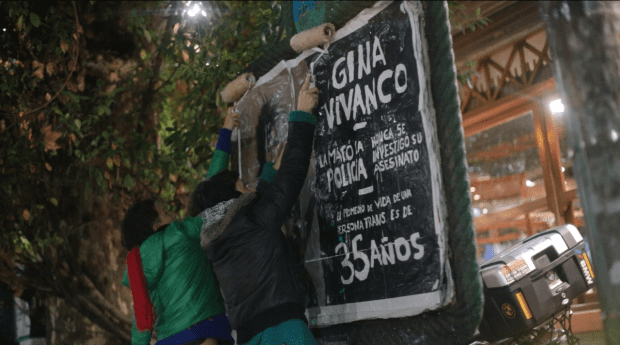Argentina’s history of LGBT rights starts out much the same as North America’s. Lesbians and gays began political organizing in the early ’70s. Pride marches were held, anti-discrimination laws were passed, and the country was ultimately the first in Latin America to legalize same-sex marriage in 2010.
That’s where the struggles diverge, however. While gays and lesbians in Canada and the US have largely ignored trans rights, Argentinean advocates saw ending institutional transphobia as a logical and necessary next step in their battle for social justice. They succeeded in having the Law of Gender Equality passed two years after marriage equality was achieved, streamlining the process of changing genders on legal documents and improving access to health care services.
Despite their success, the fight for equality also has some violent histories, something which artist Cecilia Estalles sought to uncover. Specifically, she wanted to explore the murders of trans women in her country during the ’80s and ’90s. Ultimately, she settled on one story: a woman named Gina Vivanco who was killed by police in 1987.
“I wanted somehow to look at the state’s role in the persecution and extermination of trans people and to make that visible,” she says. “Gina’s approach to life was very loving and I was moved by with the immense courage trans people had to have during that dark time in our history.”
Combining images of Vivanco, stories from relatives and materials from the Trans Archives in Buenos Aires, Estalles has created a multi-layered documentary installation which pieces together Vivanco’s story. The work is part of a larger project called the North-Sur Norte-South Photo Exchange. Developed by Toronto’s Gallery 44, Buenos Aires’ PH15 Foundation and OCAD University, the series is the result of a six-month distance collaboration between artists working in Canada and Argentina, with an eye toward exploring connections and similarities between the two countries. Along with simultaneous exhibitions in both cities, it includes a number of public installations and billboards.
Whether North American gays and lesbians will follow Argentine activists’ lead in pushing for trans rights in the wake of other victories is hard to say. But perhaps the cross-cultural encounters provided by projects like this one will ask activists here to reconsider how far they want to take their fight.
“I don’t imagine there’s anywhere in the world where it’s easy to be a woman, gay or trans,” Estalles says. “But at least in Argentina we can hope to live better with laws that protect us. It’s a great time in our country to be who you want to be. I hope we can inspire people around the world.”
NS Photo Exchange Project as part of PANAMANIA
Friday, July 17, 2015–Saturday, Aug 1, 2015
nsphotoproject.com
In partnership with Gallery 44, 401 Richmond St, Suite 420, Toronto
gallery44.org


 Why you can trust Xtra
Why you can trust Xtra


